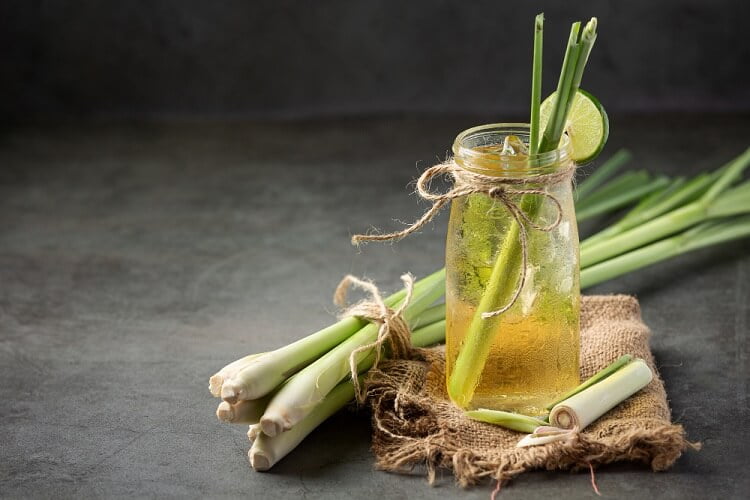Lemongrass is a type of grass that is native to Southeast Asia. It has been used there as both an herb and a medicine for centuries. The fragrance is exotic, with hints of lemon, ginger, tangerine, grapefruit, and thyme. In this article, we will first discuss; is lemongrass good for you? Then we will show how lemongrass plants are also easy to grow in your own garden!
Is Lemongrass Good For You?
Lemongrass is very safe to consume. It has been shown in one animal study that at high doses it can cause liver tumors, but this is not considered relevant to humans due to the concentrations used in the study.
Lemongrass is a good source of antioxidants and has anti-inflammatory, antibacterial, and antiviral properties. It is also high in minerals such as potassium, magnesium, zinc, copper, and selenium.
Some possible health benefits of consuming lemongrass include improved digestion, relief from nausea and vomiting, improved respiratory function, relief from pain and inflammation, reduction in anxiety and stress levels, and improved sleep quality.
Is lemongrass good for your hair?
Lemongrass is often used in hair products because it is thought to be beneficial for the scalp and hair. It is said to help control dandruff, stimulate hair growth, and add shine and luster to the hair.

How To Plant Lemongrass In Your Garden
To plant it, you’ll need a sunny spot in your garden. The plants like well-drained soil and do not tolerate wet feet. You can start with seeds or transplants. If starting from seed, wait until the weather is warm (60 degrees Fahrenheit) before planting them outside. Sow the seeds about an inch deep and space them 12 to 18 inches apart. If transplanting, be sure to water the plants well for a few days after you move them. You can fertilize once a month with organic fertilizer or compost tea. Keep in mind that lemongrass is a perennial plant that can be grown in USDA zones Zone 11 and up and will come back year after year.
Growing The Plant in Colder Climate
In colder climates, however, the plant is often grown as an annual. When you begin harvesting the plants, cut them at about ½ inch above ground level and use a sharp knife or shears to make clean cuts. Harvesting is best done early in the morning when it is cooler outside so that your plant will quickly dry out from the evaporation of its water content. You can also dry the leaves by hanging them in a warm, dark place for approximately two weeks and turning them over occasionally so that all sides get dried equally.
Additional Tips:
these types of plants are easy to grow from seeds or divisions of the clumps. Seeds should be planted indoors about six weeks before the last frost date in your area. Once all danger of frost has passed, the plants can be transplanted outdoors. Space them about 18 inches apart in full sun to partial shade.
Water lemongrass regularly, especially during hot, dry weather. Fertilize once a month with organic fertilizer or compost tea.
In just a few short months, you will have your own supply of fresh lemongrass to use in your cooking or to enjoy its health benefits!
Did you know that one of the benefits of growing lemongrass in your own garden is that it repels bugs away? Find out more in this article:
To Conclude, is lemongrass good for you? lemongrass is a safe and healthy herb that has many beneficial properties. It is easy to grow in your own garden, and you can harvest it fresh for use in your cooking. Lemongrass is a great addition to any garden.











